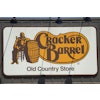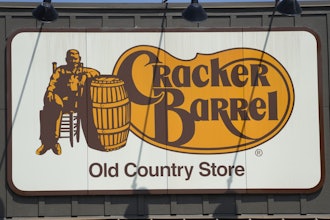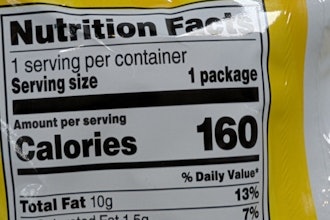The FDA regulations surrounding nutrition labels for sugars are about to get more strict, and some have said will likely change the way foods are made. However, there is another impact this change may have that is likely to drive more sales for food manufacturers and retailers.
Strict guidelines about ingredients force brands to provide additional transparency about what’s in their products. Today, consumers are looking for this information more than ever before, and will be loyal to the brands that provide it.
In fact, a recent study by Label Insight reveals that 94 percent of consumers will be loyal to a brand that offers complete transparency. What’s more, more than a third (39 percent) of consumers say they would switch brands if their current brands don’t provide the information they’re looking for on product labels.
The recent FDA change is just another step in the larger push for consumer transparency in food labeling. Label Insight’s Food Revolution study, released earlier this year, reveals that three-fourths of consumers do not trust the accuracy of food labels, and that another 35 percent admit they are confused by what labels say. It’s no wonder the rules are changing.
Here’s a closer look at what FDA regulations such as this mean for food manufacturers and retailers, and how the digital medium may be the answer to helping companies keep up with ever-changing requirements.
What this means for brands, manufacturers and grocers
While the new FDA guidelines specify sugar regulations, brands and manufacturers who are able to derive rich and granular data at the product and ingredient level, will be able to easily customize their product information to any required format, such as these new FDA guidelines, across hundreds of thousands of products instantaneously.
Deriving these granular attributes is the first step to providing true product transparency. However, this means offering more than what is currently required by law. More specifically, our study shows that consumers are seeking information that goes far beyond what’s required by law to providing, such as:
- Complete list of ingredients
- In-depth nutritional information
- Certifications and claims (GMO-free, Gluten-free, No Artificial Color/Dyes, No Artificial Fragrances etc.)
- Comprehensive list of known allergens (wheat, milk, nuts, fragrances, sulfates, etc.)
- Information about how products are produced (humane, cruelty-free, no animal testing, dermatologist-tested, etc.)
- Information about how products are sourced (location, sustainable, fair trade, etc.)
- Information about how products are handled (cross-contamination, storage, etc.)
While the burden to provide complete transparency often falls on the brand and manufacturer, grocers can also take some steps to provide more transparency for shoppers.
With access to deep product attribution, retailers can provide a rich shopping experience for shoppers in-store as well as online. For instance online shoppers could easily filter their product searches to meet dietary requirements and preferences such as nut-free, gluten-free, low sodium or paleo.
The digital medium is the future
Brands and manufactures know that it is impossible to include all of this information on a single packaging label. This is where the digital medium comes into play.
Brands can use their websites, mobile apps and initiatives such as SmartLabel to offer extended product information. The vast majority of consumers are interested in accessing these channels to find additional product information. 79 percent say they are very likely or somewhat likely to use SmartLabel technology and 44 percent say they would trust a brand more if it participated in the SmartLabel initiative.
FDA labeling regulations change constantly over time, but the real driver in labeling requirements for brands or manufacturers is the consumer. Whether it’s due to increased social media influence or simply a general shift in consumer values, shoppers today crave complete transparency. Rather than reacting to new FDA guidelines, brands would be smart to offer full product information upfront. Not only does this help brands meet all government requirements, but it also drives more sales and fosters customer loyalty over time.























